Demystifying Consensus Algorithms in Cryptocurrencies
What are Consensus Algorithms in Cryptocurrencies?
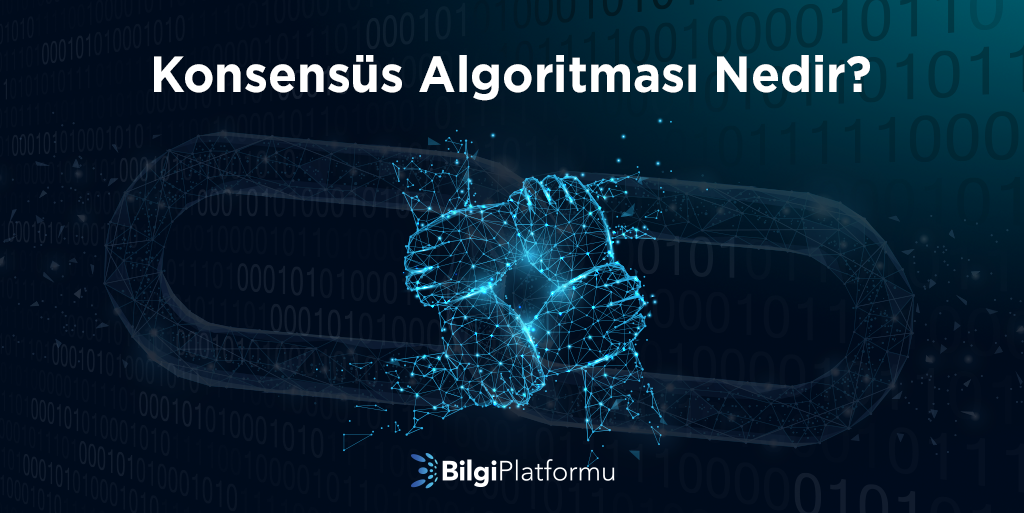 Consensus algorithms are a set of decisions accepted by the community to manage a group or system. Consensus algorithms use it to manage the majority and gather them under a common idea. When creating a consensus algorithm, the benefit of users is one of the most prioritized issues. Consensus algorithms also aim to ensure that all users have equal rights.
Consensus algorithms are a set of decisions accepted by the community to manage a group or system. Consensus algorithms use it to manage the majority and gather them under a common idea. When creating a consensus algorithm, the benefit of users is one of the most prioritized issues. Consensus algorithms also aim to ensure that all users have equal rights.
Consensus is a generally accepted opinion or decision among a group of people. Algorithm is a set of rules for performing a task in a specific step. When you integrate the two, you get a set of rules and a few steps to reach a generally accepted decision among a group of people.
What Are Consensus Algorithms and How Did They Emerge?
Consensus Algorithm is a vital part of Blockchain technology. It is a prescription for the rules of a network that defines the sequence of events. These Consensus algorithms for blockchains are implemented to enable a group of people to decide that all transactions are verified and real.
Transactions can be financial transactions such as Bitcoin, as well as blockchain-based transactions such as trading data, exchanging property rights, accessing dApps and much more.
What Do Consensus Algorithms Do?
These algorithms direct a random network of people to reach consensus on transactions in the network. Unlike the governments, institutions and businesses we are used to, people must adapt and work in these new decentralized networks without the need for a central authority.
The consensus mechanism protects blockchain transactions by avoiding double-spending issues.
The double-spending problem is an obstacle to attempts to create a digital currency. Basically, double spending is like sending someone a photo digitally. You don't post the original image, but you have a copy and two people have the same image. Imagine if someone could do this with cryptocurrencies. Anyone who can do this can make themselves insanely rich to destroy the entire network. 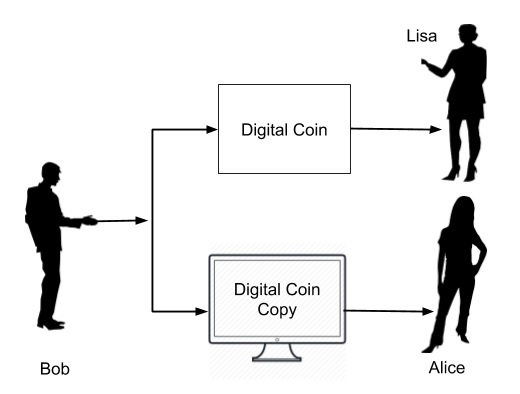 They can perform the same transaction multiple times or send a transaction while also keeping the amount sent. Hence, secure security is needed to prevent fraud and this is where the Consensus mechanism comes into play.
They can perform the same transaction multiple times or send a transaction while also keeping the amount sent. Hence, secure security is needed to prevent fraud and this is where the Consensus mechanism comes into play.
In our traditional economy, financial intermediaries simply exist to ensure that currencies are removed from one account and sent to another. This ensures that the total money supply stays the same, so you can't spend your dollars twice.
Since digital currencies are decentralized, each currency's network must find its own way to verify all transactions on the blockchain and prevent fraud. Consensus mechanisms ensure that all transactions on the blockchain are real and help digital currencies move from wallet A to wallet B.
All transactions are stored in public accounts for everyone to see, ensuring full transparency. People should be encouraged to verify transactions by solving blocks, otherwise no one will do it.
In most cases, existing consensus mechanisms reward network members for solving a block with newly created tokens, rather than transaction fees per transaction in a block. Therefore, people ensure that the network is strengthened to serve their own interests.
Proof of Work
Proof of Work is basically a protocol created to prevent attacks aimed at disrupting the functioning of a system and unwanted messages called spam sent via e-mail.
In the Bitcoin Technical Document published by Satoshi Nakamoto on October 31, 2008, it appeared in a different form than its previous usage areas. The document titled "Bitcoin: Peer-to-Peer Electronic Cash System" revealed how a reliable payment system and cryptocurrency could exist thanks to the Proof of Work protocol.
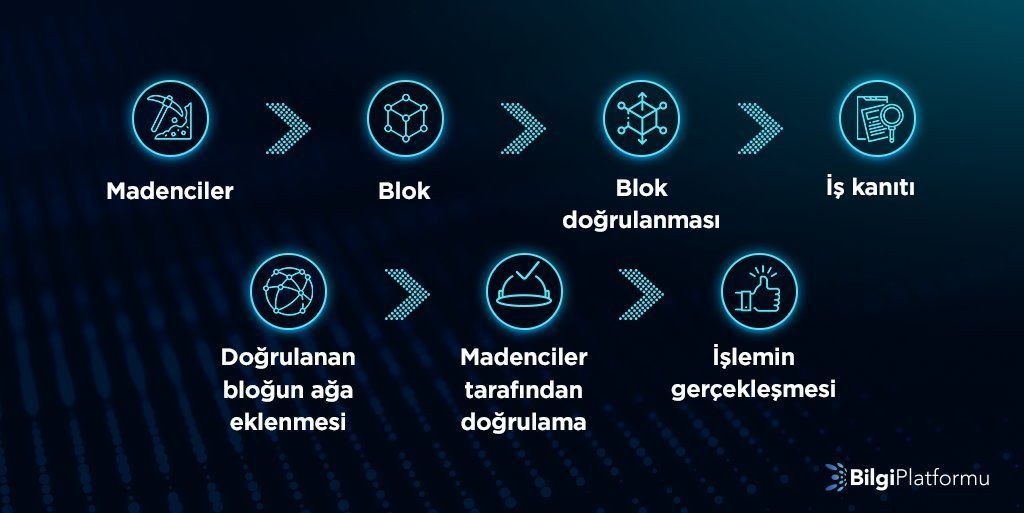 Proof of Work Stages
Proof of Work Stages
Proof of Stake
Emerging as an alternative to Bitcoin's Proof of Work protocol, Proof of Stake (PoS) is a protocol that takes digital asset ownership into account rather than a system based on computing power.
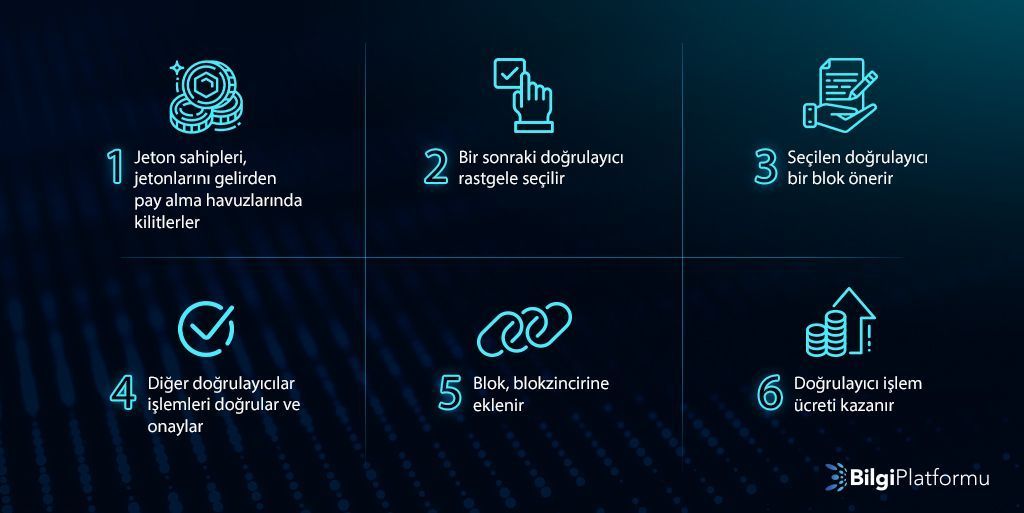 Proof of Stake Stages
Proof of Stake Stages
Proof of Burn
Proof of Burn is one of the algorithms that ensures that all participating nodes agree on the state of the blockchain network. Users participating in the Proof of Burn protocol burn the cryptocurrencies they own on that blockchain.
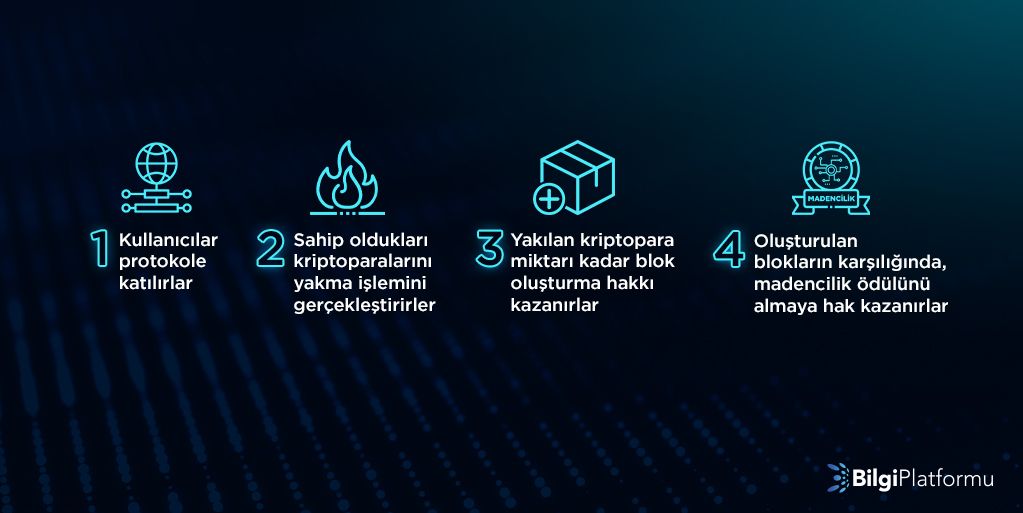 Proof of Burn Stages
Proof of Burn Stages
Proof of History
Proof of History is a protocol that tries to prove the order in which transactions occur on the blockchain and whether the transactions are proceeding correctly.
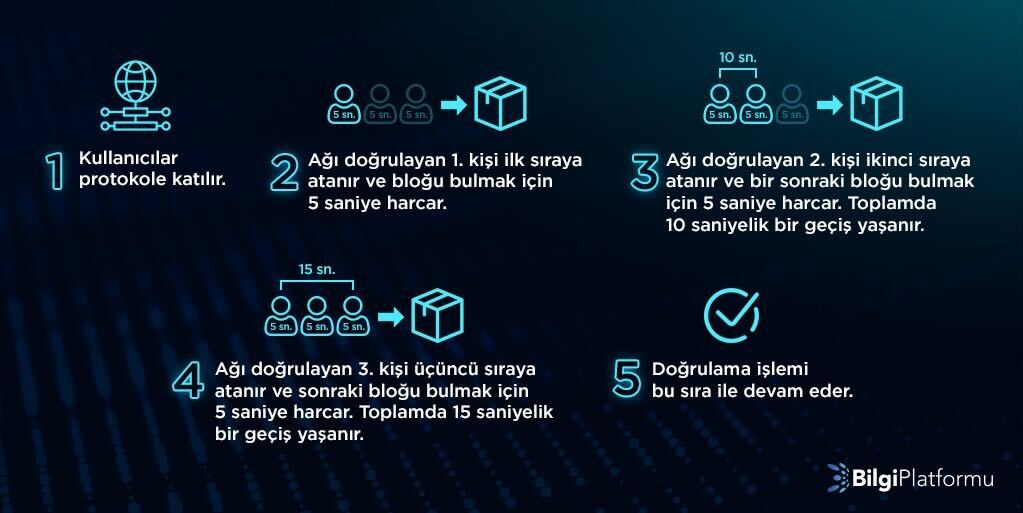 Proof of History Stages
Proof of History Stages
CONSENSUS ALGORITHMS
Cryptocurrency Chart Patterns
Triangle Formation
Ascending triangle formation is used to express a technical analysis method that predicts that the chart is on the rise and that this rise will continue. 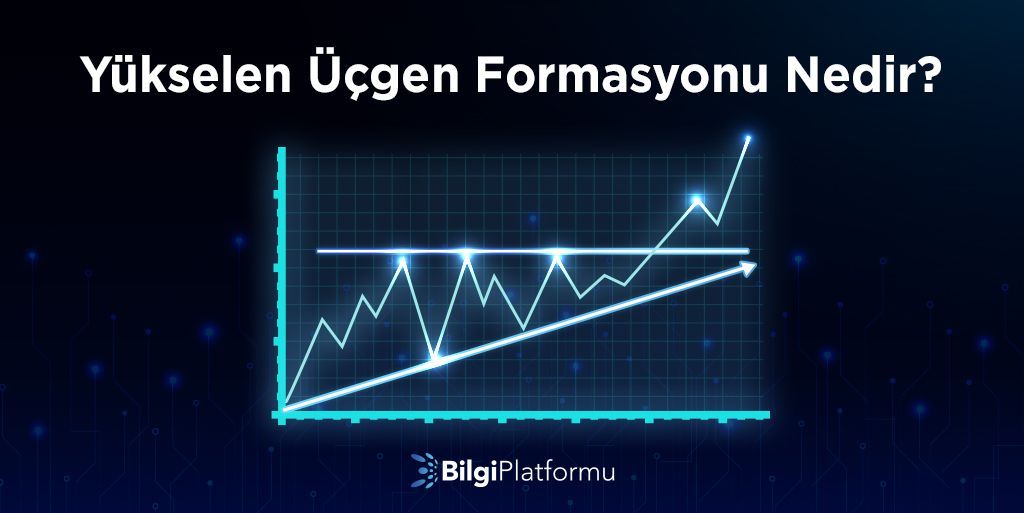 Descending triangle formation is the name given to another technical analysis method that predicts that the price chart of a cryptocurrency is declining and that the decline in the price of this cryptocurrency will continue.
Descending triangle formation is the name given to another technical analysis method that predicts that the price chart of a cryptocurrency is declining and that the decline in the price of this cryptocurrency will continue. 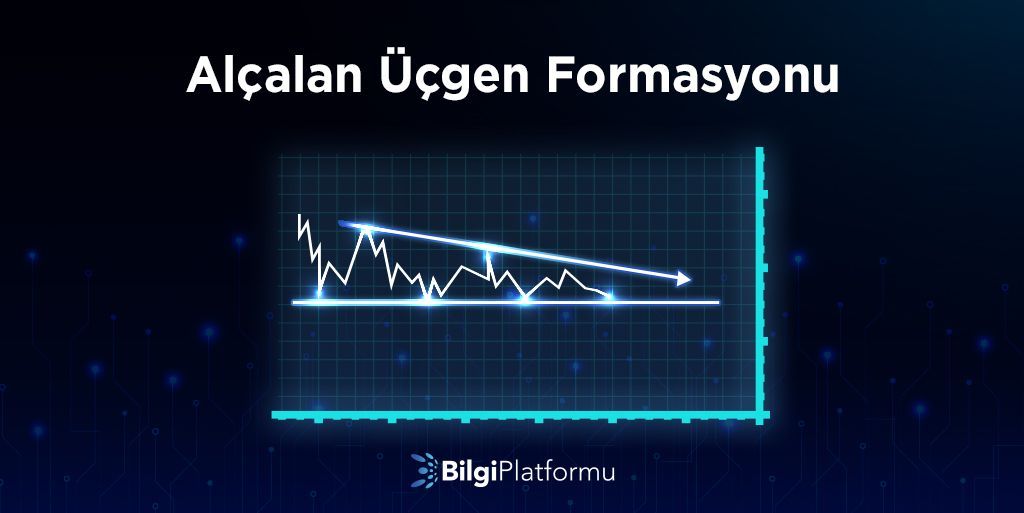 In symmetrical triangle formations where buyers and sellers are in balance, prices move in an increasingly tightening line.
In symmetrical triangle formations where buyers and sellers are in balance, prices move in an increasingly tightening line.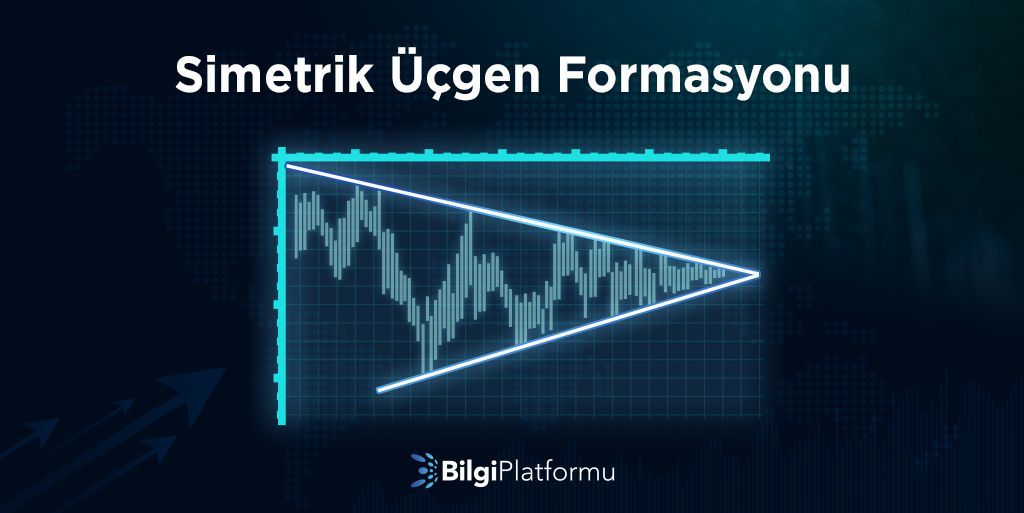
Wedge Formation
The rising wedge formation refers to a technical analysis method that predicts a downward trend in prices. 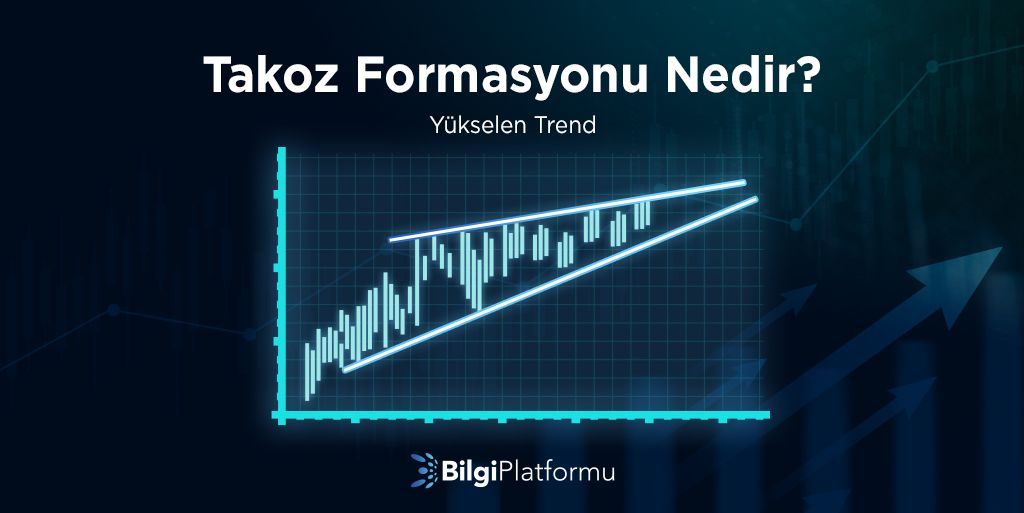 The falling wedge formation is the opposite of the rising wedge formation and refers to a type of wedge formation in which prices are predicted to show an upward trend.
The falling wedge formation is the opposite of the rising wedge formation and refers to a type of wedge formation in which prices are predicted to show an upward trend.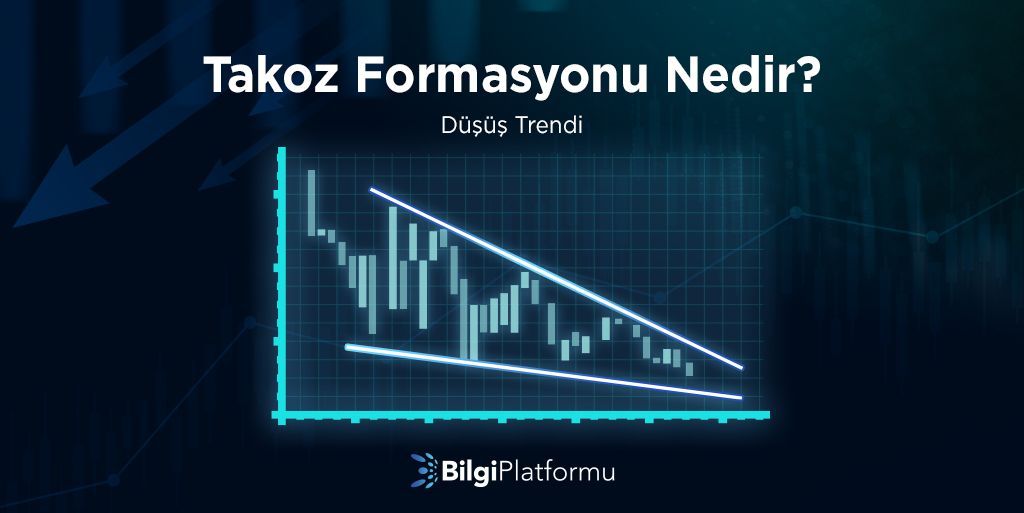
Flag Formation
 Bull flag formation is a chart formation used to interpret whether the cryptocurrency is in an upward trend again by examining the consolidation area that occurs after a sharp upward price movement of a cryptocurrency.
Bull flag formation is a chart formation used to interpret whether the cryptocurrency is in an upward trend again by examining the consolidation area that occurs after a sharp upward price movement of a cryptocurrency. 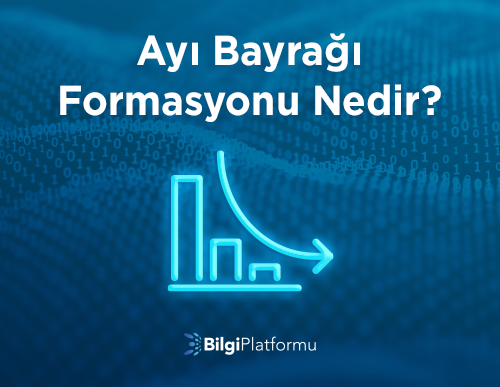 Bear flag formation is a chart formation used to interpret whether the cryptocurrency is in a downward trend again by examining the consolidation area that occurs after a sharp downward price movement of a cryptocurrency.
Bear flag formation is a chart formation used to interpret whether the cryptocurrency is in a downward trend again by examining the consolidation area that occurs after a sharp downward price movement of a cryptocurrency.
Hammer Formation
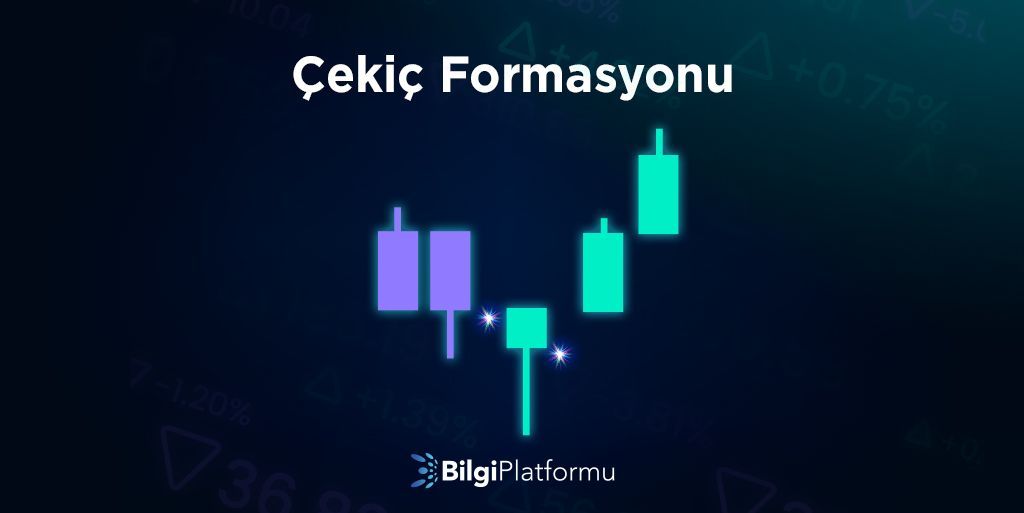 Hammer formation is a method of technical analysis in which a price chart is interpreted by the candles on the chart. Hammer formation refers to the candle shape that occurs when the value on the price chart rebounds from the lowest point and rises.
Hammer formation is a method of technical analysis in which a price chart is interpreted by the candles on the chart. Hammer formation refers to the candle shape that occurs when the value on the price chart rebounds from the lowest point and rises.
Tüm makalelerime aşağıdaki linklerden ulaşabilirsiniz:
👉 Limewire token - LMWR (Great Makale)
👉 The Evmos Manifesto (Great Makale)
👉 Free AI Image Generator Limewire AI (Great Makale)
👉 Limewirecom - Smileahn
👉 Linea Voyage Xp
👉 Peoples-Alliance
👉 Kripto Cüzdanları (Great Makale)
👉 Kriptoparalarda Konsensüs Algoritmaları Nelerdir?
👉 Xai: Etkileyici Büyüme Devam Edecek Mi? (Great Makale)
👉 Myro The Dog Nedir? (Great Makale)
👉 Sei: Eşsiz Hız ve Verimlilikle Ticarette Devrim Yaratıyor (Great Makale)
👉 Dolandırıcılıklar Kriptoyu Öldürüyor (Brilliant Makale)
👉 PayPal'ın Stablecoin'i Yükseliyor (Great Makale)
👉 Scams Are Killing Crypto (Great Makale)
👉 Sei: Revolutionizing Commerce with Unmatched Speed and Efficiency (Great Makale)
👉 Xai: Will Impressive Growth Continue? (Great Makale)
👉 Types and Importance of Cryptocurrency Wallets (Great Makale)
👉 Twitter/X
👉 Bulb Referans

![[LIVE] Engage2Earn: auspol follower rush](https://cdn.bulbapp.io/frontend/images/c1a761de-5ce9-4e9b-b5b3-dc009e60bfa8/1)






























![[ℕ𝕖𝕧𝕖𝕣] 𝕊𝕖𝕝𝕝 𝕐𝕠𝕦𝕣 𝔹𝕚𝕥𝕔𝕠𝕚𝕟 - And Now What.... Pray To The God Of Hopium?](https://cdn.bulbapp.io/frontend/images/79e7827b-c644-4853-b048-a9601a8a8da7/1)




